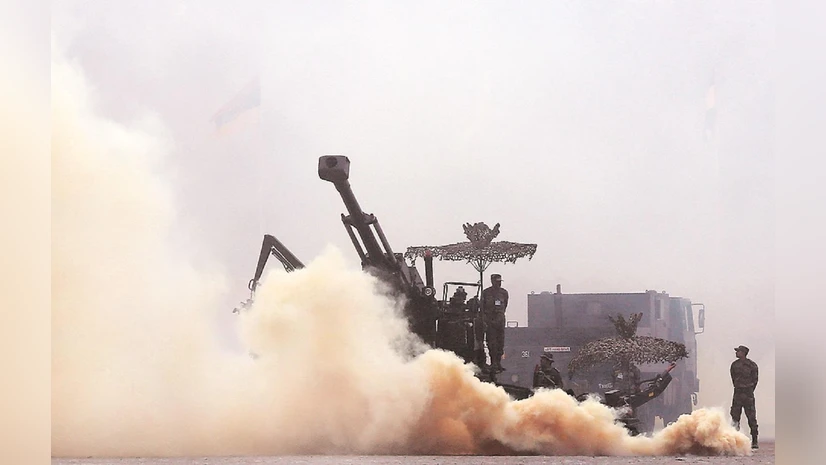Description

Disclaimer: Copyright infringement not intended.
Context:
In a landmark event, Chief of Defence Staff General Anil Chauhan released the Joint Doctrine for Amphibious Operations during the Chiefs of Staff Committee (COSC) meeting held recently, in New Delhi.
Details
What are Amphibious Operations?
- Amphibious warfare, military operations characterized by attacks launched from the sea by naval and landing forces against hostile shores.
- Modern amphibious warfare integrates virtually all forms of land, sea, and air operations.
- The main form of this warfare is the amphibious assault.
Purpose
- Continuing combat operations on land.
- To seize a site required as an advanced naval or air base.
- To deny the use of the site or area to the enemy.
- Drawing enemy attention and forces away, which can create opportunities for other combat operations.
Past instances worldwide
- During the Napoleonic Wars.
- Dardanelles Campaign was the principal amphibious assault during World War I.
- During WW II by United States during island-hopping campaigns.
- During the Vietnam War in the 1960s.
- During Gulf War.
Some Amphibious assault ships of across the world
- Type 071 Yuzhao class- China.
- Mistral-
- JDS Hyūga-
- Project 23900 amphibious assault ship- Russia.
- HMS Albion- UK.
- T-61 AB Capana- USA.
Instances of this type of operation by India
- During Kargil War: The Indian Navy's Operation Talwar was a naval operation that took place during the 1999 Kargil War.
- Indian Peace Keeping Operations in Sri Lanka between 1987 and 1990.
Some Amphibious assault ships under the Indian Navy
INS Jalashwa, INS Shardul, INS Kesari, INS Airavat, INS Gharial (L23), INS Kumbhir, LCU Mk4.
Significance of the recent Joint Doctrine for Amphibious Operations
The Doctrine is a keystone publication that will provide guidance to the Commanders for conduct of Amphibious Operations in today’s complex military environment.
Conclusion
The amphibious capability empowers the Armed Forces to conduct a multitude of operations in the Indian Ocean Region, both during war and peace. These operations are a crucial component of multi-domain operations and serve as the best example of the cohesion and integration amongst the Armed Forces.
CDS: https://www.iasgyan.in/daily-current-affairs/chief-of-defence-staff-cds
Source:
https://en.wikipedia.org/wiki/Amphibious_warfare
https://en.wikipedia.org/wiki/List_of_amphibious_warfare_ships
https://economictimes.indiatimes.com/news/defence/cds-gen-anil-chauhan-releases-joint-doctrine-for-amphibious-operations/articleshow/113196655.cms?from=mdr
https://pib.gov.in/PressReleseDetailm.aspx?PRID=2053135

|
PRACTICE QUESTION
Q. Consider the following pairs:
- Mistral- France.
- JDS Hyūga- Japan.
- Project 23900 - USA.
- HMS Albion- UK.
How many of the above pairs is/are incorrectly matched?
A. Only one
B. Only two
C. Only three
D. All four
Answer: A
Explanation:
Amphibious assault ships of across the world.
Type 071 Yuzhao class- China.
Mistral- France.
JDS Hyūga- Japan.
Project 23900 amphibious assault ship- Russia. So, Pair 3 is incorrectly matched.
HMS Albion- UK.
T-61 AB Capana- USA.
|
Array
(
[0] => daily-current-affairs/joint-doctrine-for-amphibious-operations
[1] => daily-current-affairs
[2] => joint-doctrine-for-amphibious-operations
)
















